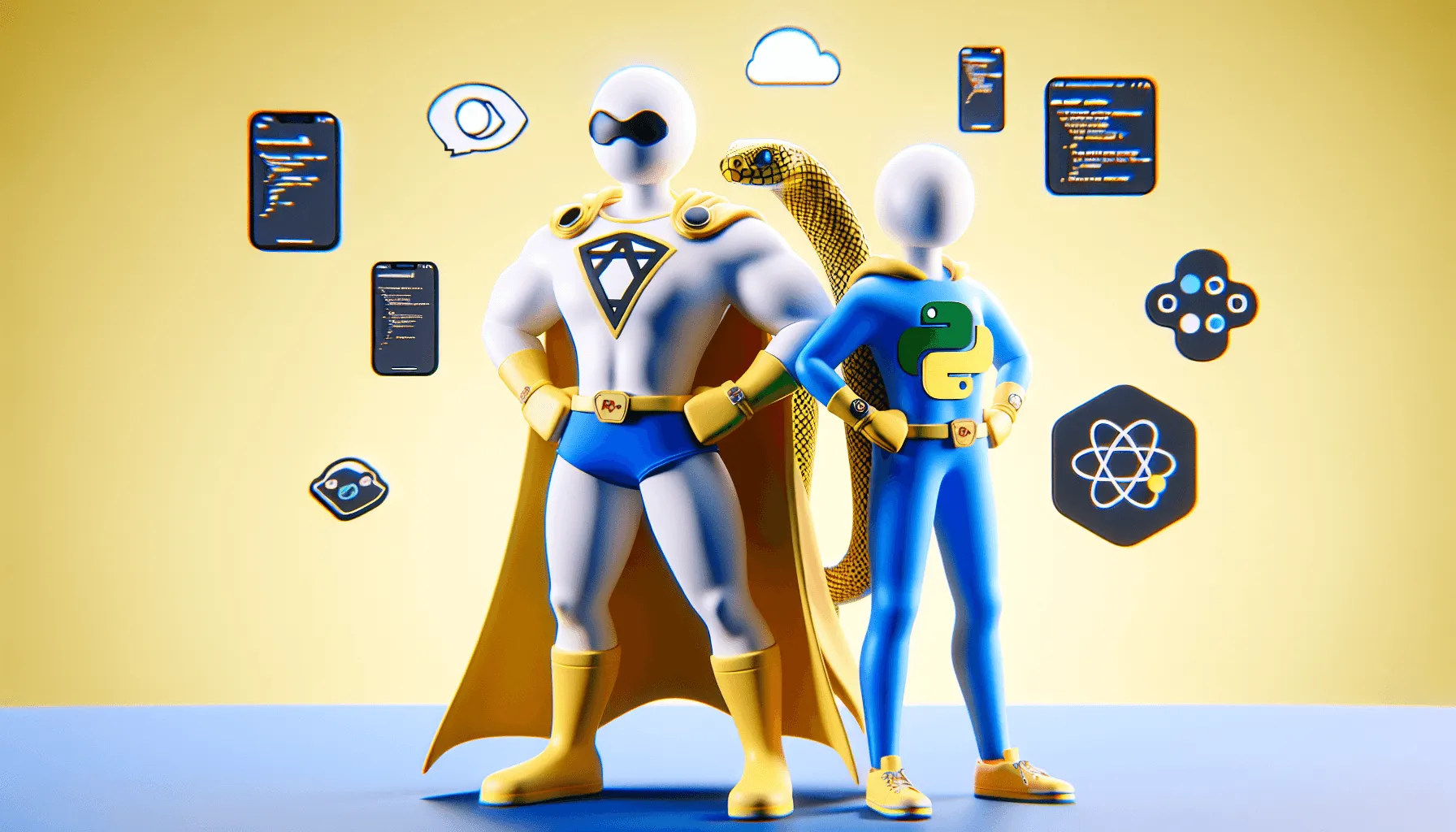🔥 Why React Native + MicroPython = The Unexpected Duo That Will Change IoT Forever!
🔥 Why React Native + MicroPython = The Unexpected Duo That Will Change IoT Forever!

🔥 Why React Native + MicroPython = The Unexpected Duo That Will Change IoT Forever!
Ever wondered what happens when the sleek interface power of React Native meets the hardware-hacking flexibility of MicroPython? Spoiler alert: you get a cross-domain solution that bridges mobile and embedded development like never before.
If you’re a fullstack developer or hardware tinkerer stuck in the middle of disparate tools, this post is your Swiss army knife. Let’s deep dive into an unconventional yet game-changing architecture: Mobile to Microcontroller communication using React Native and MicroPython.
🤯 The Problem
IoT devices are cool—but controlling them is notoriously annoying. Usually, you end up writing:
- Firmware in C (yikes)
- A web dashboard on React
- A server in Node.js or Python
- And maybe some MQTT glue logic
You waste weeks building what seems like a simple connected thermostat.
Wouldn’t it be amazing if you could simply:
- Write a mobile UI in React Native 📱
- Control an ESP32 running MicroPython 🦎
- Communicate directly via Wi-Fi with no middle server 😲
Yes, we’re doing just that. So buckle up.
🛠 What We'll Build
A React Native mobile app that can:
- Scan and connect to a device (ESP32)
- Send a command (turn on/off or blink an LED)
- Get sensor data (e.g., temperature or humidity)
All this without MQTT, without cloud, without pain.
🔌 Hardware Setup
- ESP32 Dev Board
- DHT11 or DHT22 (for temp/humidity)
- LED + Resistor (for output control)
- Powered via USB or battery
Flash MicroPython firmware on your ESP32. Check official instructions.
✍️ MicroPython Code (ESP32 Firmware)
# boot.py (runs on boot)
import network
import socket
import machine
from time import sleep
led = machine.Pin(2, machine.Pin.OUT)
# Set up Wi-Fi AP
ap = network.WLAN(network.AP_IF)
ap.active(True)
ap.config(essid='ESP32-REACT', authmode=3, password='12345678')
# HTTP Server to receive mobile commands
def web_server():
s = socket.socket(socket.AF_INET, socket.SOCK_STREAM)
s.bind(('0.0.0.0', 80))
s.listen(1)
print('Listening on port 80...')
while True:
conn, addr = s.accept()
print('Connection from', addr)
request = conn.recv(1024)
request = str(request)
if '/led/on' in request:
led.value(1)
elif '/led/off' in request:
led.value(0)
response = "HTTP/1.1 200 OK\r\nContent-Type: text/plain\r\n\r\nOK"
conn.send(response)
conn.close()
web_server()
Once flashed, your ESP32 becomes a Wi-Fi hotspot that also runs a micro web server — your React Native mobile app can talk HTTP directly to it!
📱 React Native App (Expo FTW)
We’ll use Expo for simplicity (you can eject later for advanced native stuff).
npx create-expo-app esp32-controller cd esp32-controller npx expo start
Install fetch polyfills:
npm install whatwg-fetch
App.js
import React, { useState } from 'react';
import { View, Button, Text, StyleSheet } from 'react-native';
export default function App() {
const [status, setStatus] = useState('Unknown');
const ESP_IP = 'http://192.168.4.1';
const sendCommand = async (command) => {
try {
const res = await fetch(`${ESP_IP}/led/${command}`);
const text = await res.text();
setStatus(`LED ${command.toUpperCase()} - Response: ${text}`);
} catch (err) {
setStatus(`Failed to send: ${err.message}`);
}
};
return (
<View style={styles.container}>
<Text style={styles.title}>ESP32 LED Controller</Text>
<Button title="Turn ON" onPress={() => sendCommand('on')} />
<Button title="Turn OFF" onPress={() => sendCommand('off')} />
<Text style={styles.status}>{status}</Text>
</View>
);
}
const styles = StyleSheet.create({
container: { flex: 1, justifyContent: 'center', alignItems: 'center' },
title: { fontSize: 24, marginBottom: 20 },
status: { marginTop: 20, fontSize: 16 }
});
Now connect your smartphone to the ESP32 Wi-Fi network, and test your app. Each button tap sends a command to the MicroPython web server — and turns that tiny LED on/off. Magic, right?
🔍 Why This Matters
This pattern unlocks a TON of potential:
- 🚀 Rapid prototyping of IoT UIs
- 🧠 Direct control without servers
- 🔐 More secure (no cloud exposure)
- 💰 Cheaper — no MQTT broker or backend hosting
- 🧰 Developer-friendly (Node/React/Python stack)
⚙️ Extending the Pattern
Here are a few ideas:
- Add Sensor endpoints
/temp,/humidity - Add WebSocket for real-time updates
- Build QR code pairing into the app
- Use local storage to remember paired devices
- Re-flash ESP remotely via OTA
👀 Final Thoughts
React Native and MicroPython may come from different universes: one rules the JavaScript-driven UI world, the other commands embedded devices in a lightweight interpreted Pythonic form. But together? They form a full-stack frontier for on-device edge computing.
This setup is perfect for startups, hobbyists, or professionals looking to build functional MVPs, control hardware directly, or even prototype custom hardware interfaces at lightning speed 🚀.
🔌 From mobile app to hardware signal — in under 100ms, with zero middleware. That’s a revolution.
📚 Resources
- MicroPython ESP32: https://docs.micropython.org/en/latest/esp32/
- React Native Docs: https://reactnative.dev
- Expo Start Guide: https://docs.expo.dev/
💡 Have you built something with RN + MicroPython? Drop a comment or DM me with your story!
👉 If you need this done – we offer fullstack development services.